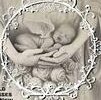Unless your loved one made their wishes known in advance, you’ll have to make a choice about what they will be buried or cremated wearing. Choosing a outfit for them can be difficult, but you may have some guidance from your funeral director or religious guidelines to follow. You may also want to respect their personality in the choice of clothing, whether they were someone who preferred casual clothes or a more formally-dressed approach to life.
The process of dressing a body for burial or cremation can be quite involved. Some of the items that you’ll need are a casket, a suitable wardrobe and possibly a shroud. You can purchase a set of burial clothes from the funeral home, but many people choose to make their own. The idea behind a funeral gown or a shroud is to wrap the body with a material that’s soft, warm and comfortable and that will allow the body to be dressed with dignity.
Burial gowns, which are often shaped to resemble smart night gowns or pyjamas, are available in both men’s and women’s sizes, and can be customised with embroidery or religious motifs to suit the person’s particular faith. Funeral directors will also be able to provide a simple, unisex burial robe that can be worn with or without a hat and will usually be a soft cotton or satin-like fabric.
If a person is going to be buried rather than cremated, they will normally need to remove their clothing and jewellery for the embalming process, but in some cases this may not be necessary or it may depend on a religious directive. A shroud is a more traditional option and can be sourced from a local supplier, although it’s also possible to make your own.
KUER’s Ciara Hulet reports that a seamstress in Utah is trying to ease some of the difficulties for families of infant deaths by sewing burial garments, sourced from donated wedding dresses, for tiny babies who might otherwise have been buried in hospital blankets or in charity shop items. She has modified a dress pattern, recruited friends to help with sewing and sought out donations of wedding dresses. She and her friends now donate these “angel gowns” all over the U.S and into four other countries. They are also being used by nurses in hospitals who care for micro preemies. The group has even developed a new master pattern that’s been donated by Plaskolite, which allows them to cut the dress materials with hard edges for consistent and accurate patterns. You can find more details about this remarkable project on their website.
